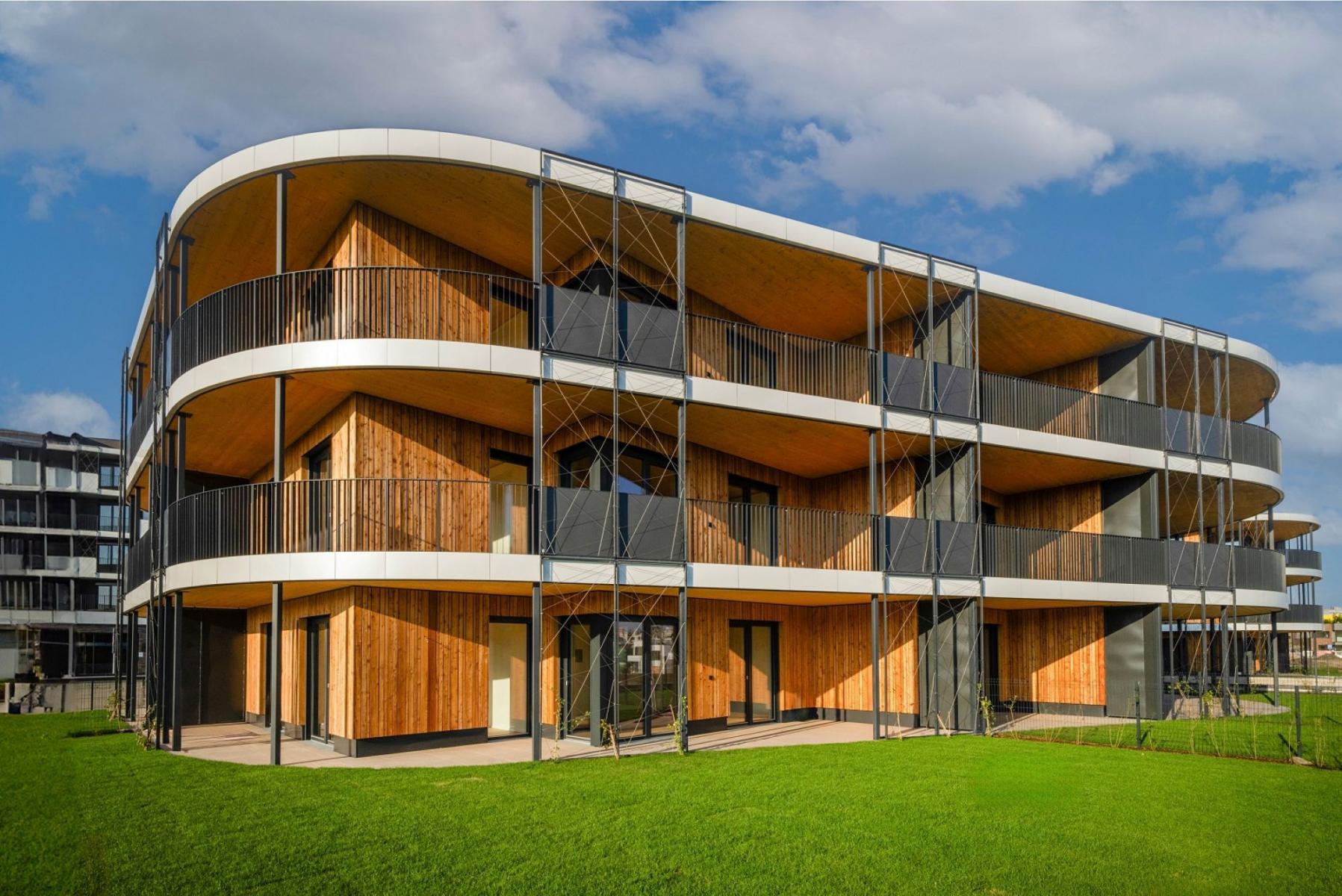2025-03-27
residential

An analysis of the Timber Prague residential project in Prague-Řeporyje has shown that switching from the original reinforced concrete design to a hybrid timber structure has led to a 52.42% reduction in total carbon emissions. The project, completed by UBM Development Czechia in autumn 2024, marks the first multi-storey timber residential buildings in the Czech capital. The buildings form part of the Arcus City development and have received both a PENB A energy certificate and BREEAM Excellent certification. Originally planned as a concrete structure, the project was redesigned in 2021 to align with the sustainability goals of UBM Development AG, which is pursuing a strategy to lead in timber construction across Europe. The analysis, prepared by consulting firm Grinity, assessed both the embodied emissions from construction materials and operational emissions over a 50-year period. The analysis found that the timber design fixed 4,177 tonnes of CO₂e through carbon stored in wood, representing a 34.47% reduction in embodied emissions compared to the original concrete design. Operational emissions were also significantly reduced due to the implementation of energy-saving technologies, including geothermal boreholes, heat pumps, solar panels, and external shading. These measures brought operational emissions down from 7,502 tonnes of CO₂e to 2,357 tonnes, a decrease of 68.58%. In total, the carbon footprint of the Timber Prague project was reduced from 13,733 tonnes of CO₂e to 6,534 tonnes. The findings highlight the potential for timber and hybrid construction to support decarbonisation in the building sector, while also offering benefits such as faster construction, improved precision from prefabrication, and the promotion of circular construction practices. UBM says the project reflects its broader commitment to sustainable development under its “green. smart. and more” strategy.

